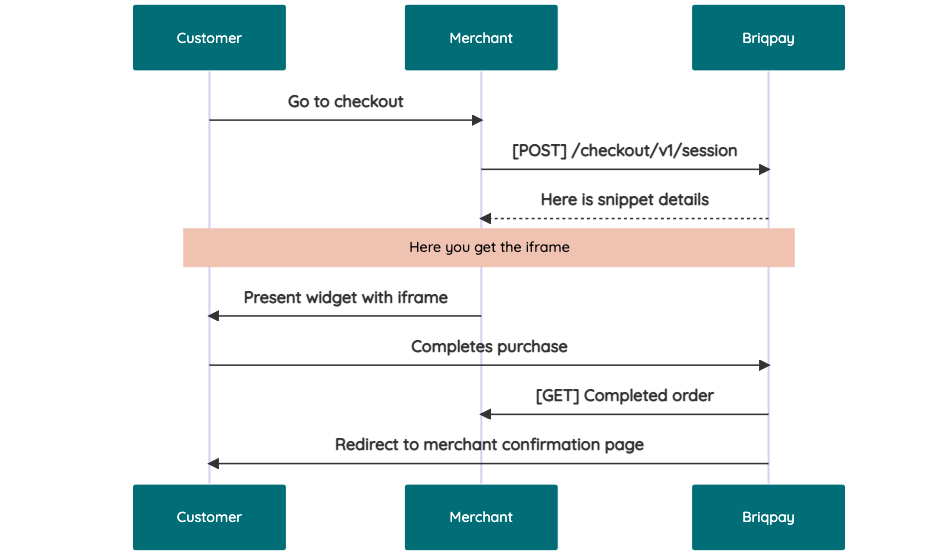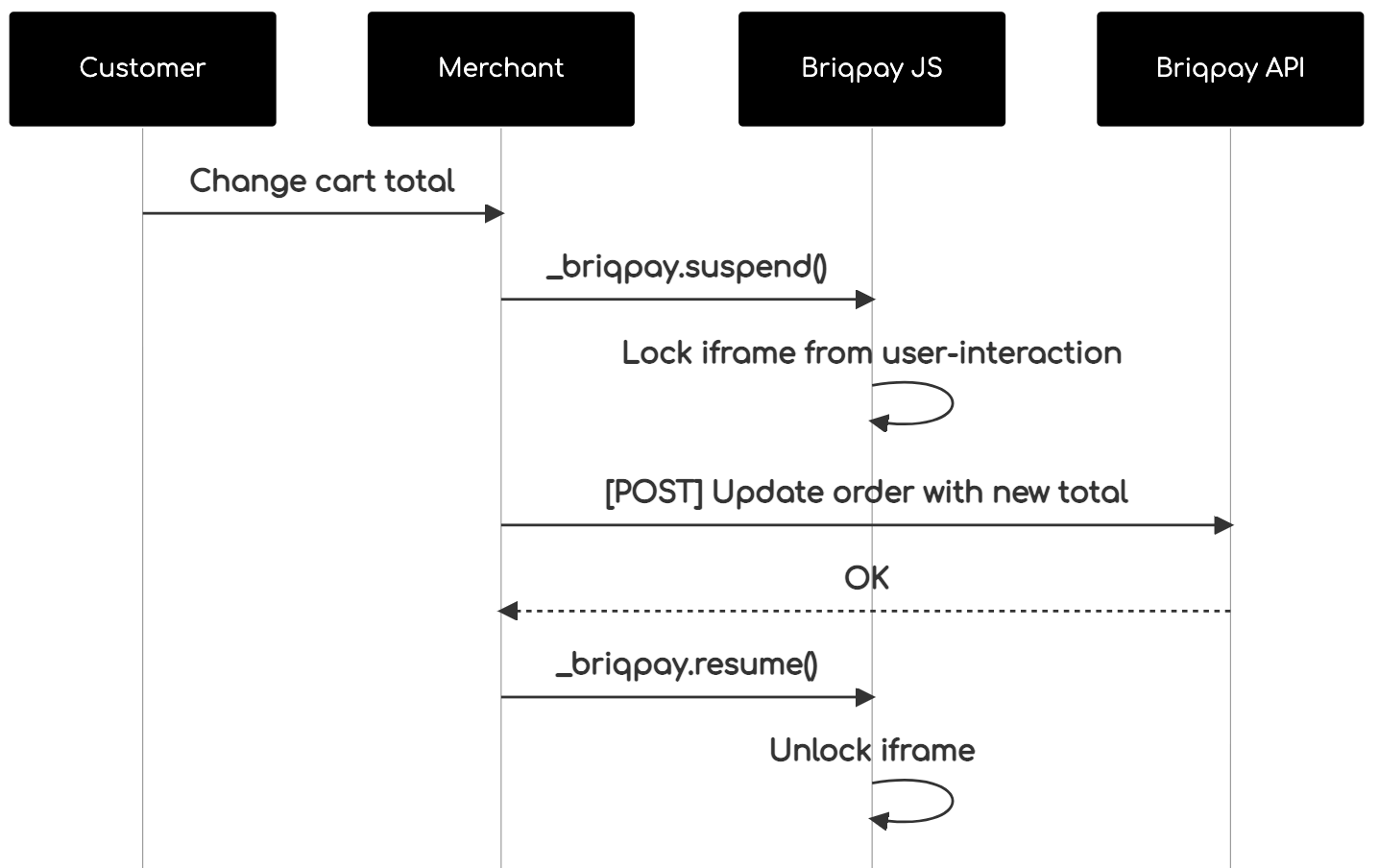Libraries tagged by purchases
flashy/magento2-integration
5130 Downloads
Flashy's module for Magento 2+ adds tracking events View Content, Cart Updates, Purchases, Page Views and more and make sure everything is in sync with the Flashy platform.
briqpay/php-sdk
10815 Downloads
This is the API documentation for Briqpay. You can find out more about us and our offering at our website [https://briqpay.com](https://briqpay.com) In order to get credentials to the playgrund API Please register at [https://app.briqpay.com](https://app.briqpay.com) # Introduction Briqpay Checkout is an inline checkout solution for your b2b ecommerce. Briqpay Checkout gives you the flexibility of controlling your payment methods and credit rules while optimizing the UX for your customers # SDKs Briqpay offers standard SDKs to PHP and .NET based on these swagger definitions. You can download them respively or use our swagger defintitions to codegen your own versions. #### For .NET `` Install-Package Briqpay `` #### For PHP `` composer require briqpay/php-sdk `` # Standard use-case As a first step of integration you will need to create a checkout session. \n\nIn this session you provide Briqpay with the basic information necessary. In the response from briqpay you will recieve a htmlsnippet that is to be inserted into your frontend. The snippet provided by briqpay will render an iframe where the user will complete the purchase. Once completed, briqpay will redirect the customer to a confirmation page that you have defined.  # JavaScript SDK The first step of integration is to add our JS to your site just before closing the ```` tag. This ensures that our JS library is avaliable to load the checkout. ```` Briqpay offers a few methods avaliable through our Javascript SDK. The library is added by our iframe and is avalable on ``window._briqpay`` If you offer the posibility to update the cart or order amonts on the checkout page, the JS library will help you. If your store charges the customer different costs and fees depening on their shipping location, you can listen to the ``addressupdate``event in order to re-calculate the total cost. ```javascript window._briqpay.subscribe('addressupdate', function (data) { console.log(data) }) ``` If your frontend needs to perform an action whe the signup has completed, listen to the ``signup_finalized`` event. ```javascript window._briqpay.subscribe('signup_finalized', function (status) { // redirect or handle status 'success' / 'failure' }) ``` If you allow customers to change the total cart value, you can utilise the JS library to suspend the iframe while you perform a backen update call towards our services. As described below:  The iframe will auto-resume after 7 seconds if you dont call ``_briqpay.resume()`` before # Test Data In order to verify your integration you will neeed to use test data towards our credit engine. ## Company identication numbers * 1111111111 - To recieve a high credit scoring company ( 100 in rating) * 2222222222 - To test the enviournment with a bad credit scoring company (10 in rating) ## Card details In our playground setup your account is by default setup with a Stripe integration. In order to test out the card form you can use the below card numbers: * 4000002500003155 - To mock 3ds authentication window * 4000000000000069 Charge is declined with an expired_card code. You can use any valid expiry and CVC code # Authentication Briqpay utilizes JWT in order to authenticate calls to our platform. Authentication tokens expire after 48 hours, and at that point you can generate a new token for the given resource using the ``/auth`` endpoint. - Basic Auth - only used on the auth endpoint in order to get the Bearer Token - JWT Bearer Token - All calls towards the API utlizes this method"
amwal/payments
1757 Downloads
Amwal payment plugin for Magento 2 enables one click checkout for instantaneous purchases from product, mini-cart and cart pages.
easydigitaldownloads/edd-manual-purchases
127 Downloads
Provides an admin interface for manually creating purchase orders in Easy Digital Downloads
wowmaking/web-purchases
595 Downloads
magenable/module-purchase-partner-url
15 Downloads
A Magento 2 module that allow specify partner url for any product
jinseokoh/purchase-webhooks
1865 Downloads
Handling App Purchase Server-to-Server Webhooks
ether/purchase-patterns
3434 Downloads
Easily keep track of and show products customers bought together. Plus, sorting by individual and order sales.
enesdayanc/masterpass-commit-purchase
1890 Downloads
Package generated from https://masterpassturkiye.com:8082/MMIUIMasterPass_V2/MerchantServices/MPGCommitPurchaseService.asmx?WSDL using wsdltophp/packagegenerator
creativestyle/magesuite-pwa-instant-purchase
1437 Downloads
The module extends magesuite-pwa module with instant-purchase feature support
creativestyle/magesuite-instant-purchase
598 Downloads
Improvements to native instant-purchase functionality
armezit/lunarphp-purchase-limit
201 Downloads
Lunar E-Commerce Purchase Limit Addon
zfuming/omnipay-wxpay
35 Downloads
Wechat gateway for Omnipay payment processing library
ynievespuntonetsurl/omnipay-qvapay
3 Downloads
QvaPay gateway for Omnipay payment processing library
xxtime/omnipay-mycard
95 Downloads
MyCard gateway for Omnipay payment processing library